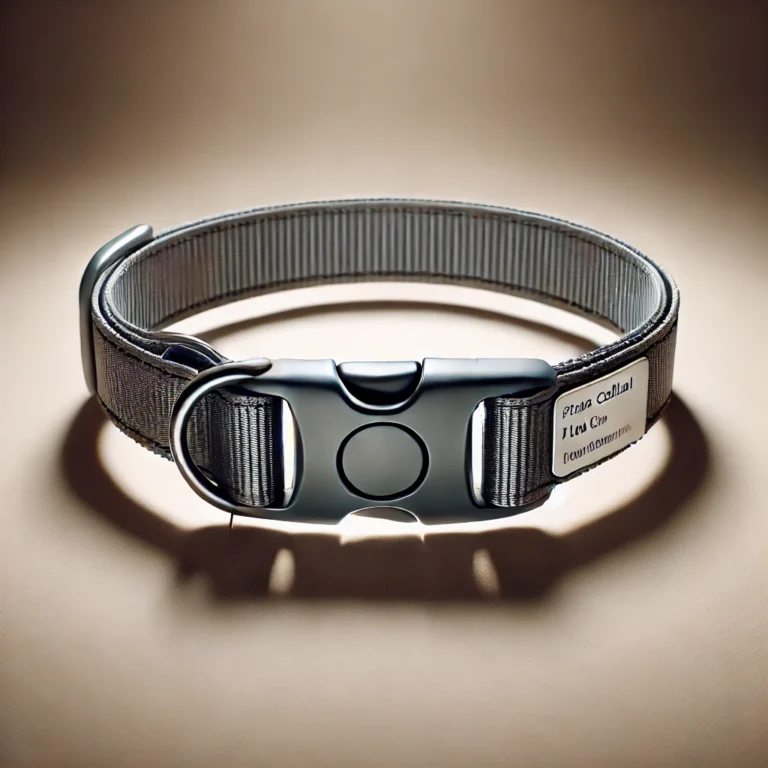How Long Do Flea and Tick Medications Take to Work on …

Do fleas ever fully go away?YES!Fleas can be controlled and eliminated, but they may not fully go away without consistent treatment and preventative measures.Fleas and ticks are common pests that can cause significant discomfort and health problems for pets. Whether you’re a dog owner or a cat parent, keeping your furry friend safe from these parasites is essential for their well-being. One of the most common ways to protect your pet from fleas and ticks is through the use of medications. But how long do flea and tick medications take to work? And more importantly, how do you choose the best treatment for your pet?
Types of Flea and Tick Medications
When it comes to protecting your pet from fleas and ticks, there are several types of medications to choose from. The right treatment for your pet will depend on factors such as your pet’s age, size, health condition, and lifestyle. Here’s a breakdown of the most common types of flea and tick medications:
1. Oral Medications
Oral flea and tick medications are typically pills or chewables that are ingested by your pet. These medications are absorbed into the bloodstream, where they begin to work on killing fleas and ticks. Some oral medications provide long-term protection, lasting up to a month or more.
Examples of oral medications include:
- NexGard: A chewable tablet that kills fleas and ticks within hours of ingestion.
- Bravecto: Another chewable tablet that provides up to 12 weeks of protection against fleas and ticks.
- Simparica: A chewable tablet that provides protection for up to 35 days.
2. Topical Medications
Topical flea and tick treatments are applied directly to your pet’s skin, typically between the shoulder blades. These medications are absorbed through the skin and spread throughout your pet’s body, providing protection against fleas and ticks. Topical treatments can be effective immediately or within a few hours, depending on the specific product.
Examples of topical medications include:
- Frontline Plus: A well-known topical treatment that kills fleas and ticks within 12 hours of application.
- Advantage II: A topical treatment that kills fleas within 12 hours and offers protection for a month.
- K9 Advantix II: A topical treatment for dogs that kills fleas, ticks, and mosquitoes.
3. Flea Collars
Flea collars are worn around your pet’s neck and slowly release chemicals that repel and kill fleas and ticks. While not as fast-acting as oral or topical medications, flea collars can provide long-lasting protection and are generally water-resistant.
Examples of flea collars include:
- Seresto Collar: Provides up to 8 months of protection against fleas and ticks.
- Hartz UltraGuard Plus: A collar that kills fleas and ticks for up to 7 months.

4. Flea and Tick Shampoos
Flea and tick shampoos are used to wash your pet and kill fleas and ticks on contact. While effective in removing pests, these shampoos generally only provide short-term protection. They can be used in combination with other treatments for added protection.
Examples of flea and tick shampoos include:
- Sentry Flea and Tick Shampoo: Kills fleas and ticks on contact and provides up to a week of protection.
- Adams Flea and Tick Shampoo: A shampoo that kills fleas and ticks and provides immediate relief from itching.
5. Natural Flea and Tick Repellents
For pet owners who prefer a more natural approach, there are also flea and tick medications made from natural ingredients. These products may not be as effective as chemical-based treatments but can provide some level of protection. Common natural repellents include essential oils such as eucalyptus, lavender, and citronella.
Examples of natural flea and tick repellents include:
- Vet’s Best Flea and Tick Spray: A natural spray made with essential oils that repels fleas and ticks.
- Wondercide Flea and Tick Spray: A natural spray that kills and repels fleas and ticks using plant-based ingredients.
How Flea and Tick Medications Work
The effectiveness of flea and tick medications depends on how the product works. Each type of medication uses different methods to kill or repel fleas and ticks, and the speed at which they take effect can vary.
Oral Medications
Oral flea and tick medications work by being absorbed into your pet’s bloodstream. When a flea or tick bites your pet, it ingests the medication from the bloodstream, which kills the pest. These medications typically start working within a few hours to a day after ingestion, depending on the product. Some oral medications, such as NexGard, can kill fleas within hours of ingestion, while others, like Bravecto, provide long-lasting protection, with some products lasting up to 12 weeks.
Topical Medications
Topical flea and tick treatments are absorbed through the skin and spread throughout your pet’s body. These treatments typically start working within 12 hours to a day after application, but some products can begin to kill fleas and ticks within a few hours. Topical treatments like Frontline Plus and Advantage II are effective at killing fleas and ticks and preventing future infestations.
Flea Collars
Flea collars work by releasing chemicals that are absorbed by your pet’s skin and spread throughout their body. These chemicals either kill fleas and ticks on contact or repel them. While flea collars take longer to start working than oral or topical medications, they provide long-lasting protection, making them a good choice for ongoing flea and tick control.
Flea and Tick Shampoos
Flea and tick shampoos kill pests on contact. These products provide immediate relief from fleas and ticks, but they do not offer long-term protection. To ensure continued protection, flea and tick shampoos should be used in combination with other treatments like oral or topical medications.
Natural Flea and Tick Repellents
Natural repellents work by emitting scents that are unpleasant to fleas and ticks, keeping them away from your pet. While these products may not kill fleas and ticks, they can help repel them. Natural repellents typically take longer to work compared to chemical-based treatments, and their effectiveness can vary from pet to pet.
How Long Does It Take for Flea and Tick Medications to Work?
The time it takes for flea and tick medications to work depends on the type of medication and the product you are using. Below is an estimated timeline of how long it typically takes for different types of flea and tick medications to start working:
Oral Medications
- NexGard: This chewable tablet begins killing fleas within 4 hours of ingestion and offers protection for a full month.
- Bravecto: This chewable tablet can take up to 24 hours to start killing fleas, but it provides 12 weeks of protection against both fleas and ticks.
- Simparica: This chewable tablet starts killing fleas and ticks within 3 hours and provides protection for 35 days.
Topical Medications
- Frontline Plus: Starts killing fleas and ticks within 12 hours of application and provides protection for up to 30 days.
- Advantage II: Kills fleas within 12 hours of application and offers month-long protection.
- K9 Advantix II: Begins killing fleas and ticks within 12 hours and offers 30-day protection.
Flea Collars
- Seresto Collar: Starts working within 24 hours of wearing the collar and provides up to 8 months of protection.
- Hartz UltraGuard Plus: Begins working within 24 hours and offers 7 months of protection.
Flea and Tick Shampoos
- Sentry Flea and Tick Shampoo: Kills fleas and ticks immediately upon contact, but provides only short-term protection (about a week).
- Adams Flea and Tick Shampoo: Also kills fleas and ticks on contact, offering short-term relief.
Natural Flea and Tick Repellents
- Vet’s Best Flea and Tick Spray: Starts repelling fleas and ticks immediately after application, but may not provide the same level of effectiveness as chemical-based treatments.
- Wondercide Flea and Tick Spray: Provides immediate repellent action, but its effectiveness may not be as long-lasting as chemical treatments.
Factors Affecting the Effectiveness of Flea and Tick Medications
Several factors can affect how long flea and tick medications take to work, and how effective they are. Understanding these factors can help you choose the best treatment for your pet and ensure they remain protected from parasites.
1. Type of Medication
As mentioned earlier, the type of medication you choose can impact how quickly it works. Oral medications typically start working faster than topical medications, while flea collars may take longer to begin showing results. Additionally, natural repellents tend to take longer to work compared to chemical-based treatments.
2. Your Pet’s Health and Size
The effectiveness of flea and tick medications can be influenced by your pet’s size, age, and overall health. Larger pets may require higher doses of medication, while older or ill pets may metabolize the medication more slowly. Always follow the dosing instructions provided by your veterinarian or the medication label.
3. Flea and Tick Infestation Levels
The severity of the flea and tick infestation can also affect how quickly medications work. If your pet is already heavily infested, it may take longer for the medication to kill all the pests. In severe cases, a combination of treatments may be necessary to eliminate the infestation.
4. Product Application and Timing
For topical medications, proper application is crucial to ensure that the medication is absorbed correctly. Applying the medication to the wrong part of the body or getting it wet soon after application can reduce its effectiveness. Additionally, it’s important to apply medications as directed to maintain consistent protection.
5. Environmental Factors
Fleas and ticks are often found in specific environments, such as grassy or wooded areas. If your pet spends time in these environments, they may be more exposed to fleas and ticks, requiring more frequent medication. Additionally, seasonal factors, such as warmer weather, can increase flea and tick activity.
do you know
Fleas are a common concern for pet owners, leading to uncomfortable and often harmful infestations. While traditional chemical treatments are effective, the shift towards safer, natural flea repellents is growing. This article delves into the benefits of using natural solutions like natural flea killer and flea repellent for dogs, ensuring your home remains a safe haven without the harsh chemicals.
How to Ensure Flea and Tick Protection for Your Pet
To ensure that your pet stays protected from fleas and ticks, it’s important to use the right medication and follow proper preventive measures.
1. Choose the Right Medication
Consult your veterinarian to choose the best flea and tick medication for your pet. Consider your pet’s age, size, health, and lifestyle when making a decision. Some pets may need a more aggressive treatment plan, while others may only need seasonal protection.
2. Regular Application
Flea and tick medications need to be applied regularly to maintain effectiveness. Whether you are using oral medications, topical treatments, or flea collars, ensure that you follow the recommended schedule for reapplication.
3. Environmental Control
In addition to medication, it’s important to treat your pet’s environment for fleas and ticks. Regularly wash your pet’s bedding, vacuum your home, and treat your yard with appropriate flea and tick treatments to reduce the risk of reinfestation.
4. Monitor for Signs of Fleas and Ticks
Keep an eye out for signs of fleas and ticks, such as excessive scratching, biting, or licking. If you notice any of these signs, consult your veterinarian for advice on additional treatments.
Conclusion
Flea and tick medications are an essential part of keeping your pet safe from parasites that can cause discomfort and health problems. While the time it takes for these medications to work varies, most treatments start showing results within a few hours to a day. By understanding the different types of medications available, factors that affect their effectiveness, and best practices for flea and tick prevention, you can ensure that your pet remains protected and free from pests year-round. Always consult your veterinarian to determine the best course of action for your pet’s specific needs.
How quickly does flea and tick medicine work?
Flea and tick medications typically begin working within hours after application, though the exact time can vary depending on the type of medication used. Oral medications like NexGard can start killing fleas within a few hours, while topical treatments such as Frontline Plus may take up to 12 hours to start showing results. Flea and tick medications are designed to be highly effective at controlling parasites, but how quickly they work depends on factors like your pet’s condition, the severity of the infestation, and the product’s formulation. To ensure effectiveness, follow the recommended dosing schedule and choose a product that best suits your pet’s needs.
How long does it take for fleas to go away after medicine?
After using flea and tick medications, it generally takes a few hours to a day for fleas to begin dying off, but complete eradication may take several days to a week. Flea and tick medications are designed to work quickly, but it’s important to note that the effectiveness can vary based on the severity of the infestation and how well the product is applied. Fleas in different stages of development may also take varying amounts of time to be eliminated. For optimal results, continue to use flea and tick medications as directed by your veterinarian, and consider treating your pet’s environment to prevent reinfestation.
How long will my dog itch after flea treatment?
After administering flea and tick medications, some dogs may continue to itch for a few days, even after the fleas are killed. This lingering itching is often due to the allergic reaction to flea saliva, which can take time to subside. Flea and tick medications kill the fleas, but the irritation caused by the bites may persist for a while. If the itching continues for an extended period or worsens, it’s advisable to consult a veterinarian to rule out any other underlying causes, such as skin infections or allergies. In most cases, the itching should gradually decrease as your dog’s skin heals.
Will flea and tick medicine kill existing fleas?
Yes, flea and tick medications are designed to kill existing fleas as well as prevent future infestations. Topical and oral flea and tick treatments work by either killing fleas on contact or preventing their ability to reproduce. Products like NexGard and Frontline Plus target adult fleas and their larvae, effectively eliminating them from your pet’s body. However, it’s important to follow up with environmental treatment, such as cleaning your pet’s bedding and vacuuming your home, to address any fleas that may be in your home. Flea and tick medications work best when combined with these additional preventive steps.
Do fleas ever fully go away?
Fleas can be controlled and eliminated, but they may not fully go away without consistent treatment and preventative measures. Flea and tick medications, when used properly, can kill adult fleas and prevent new infestations. However, fleas are resilient creatures, and without proper environmental control, they can re-enter your home. Treating your pet and your living space regularly is key to fully getting rid of fleas. Flea eggs, larvae, and pupae can hide in cracks and furniture, so ongoing maintenance and environmental treatment, including washing bedding and vacuuming, are essential for ensuring that fleas don’t return.
Can my dog sleep in my bed with fleas?
It is not advisable for your dog to sleep in your bed if they have fleas. Fleas can easily transfer from your pet to your bedding, which can cause a re-infestation in your home. Flea and tick medications work by eliminating fleas on your pet, but any fleas that are present in your environment, including your bed, will need to be dealt with to prevent further problems. After applying flea and tick medications, it’s important to clean your home, wash all bedding, and vacuum thoroughly to help eliminate any remaining fleas and eggs. If your dog has fleas, it’s best to restrict them from sleeping in your bed until the issue is fully resolved.
Can fleas live in human hair?
While fleas prefer the fur of animals, they can occasionally jump onto human hair, especially if a person has been in close contact with an infested pet. However, fleas do not typically stay or breed in human hair. Fleas require animal blood to survive and reproduce, so they will usually leave human hair and return to a pet to feed. Flea and tick medications for pets are specifically designed to target and kill fleas, but humans can also take precautions by washing their hair and body if they believe they have been exposed to fleas. If fleas are found in your home, treating the environment and your pets with flea and tick medications is crucial.
How to know if flea treatment is working?
To know if flea and tick treatments are working, look for signs such as a reduction in your pet’s scratching, biting, or licking. After applying flea and tick medications, it’s normal for your pet to show some improvement within hours. Over the next several days, you should notice fewer fleas on your pet’s fur. Some medications also kill fleas on contact, while others prevent fleas from laying eggs, breaking the flea lifecycle. You may also check your pet’s fur and bedding for dead fleas, eggs, or larvae. If no improvement is seen after a few days or weeks, consult your veterinarian to determine if a different treatment is needed.
What kills fleas on dogs the fastest?
Flea and tick medications that contain active ingredients such as Afoxolaner (NexGard), Fluralaner (Bravecto), or Fipronil (Frontline Plus) work quickly to kill fleas on dogs. These medications typically start killing fleas within a few hours of application or ingestion. Oral medications like NexGard and Bravecto are known for their fast-acting formula that can kill fleas within hours of administration. Topical treatments, like Frontline Plus, also provide rapid results, killing fleas within 12 hours of application. If you’re looking for the fastest results, oral flea and tick medications often provide the quickest relief, but it’s important to follow the recommended treatment schedule for continued protection.


